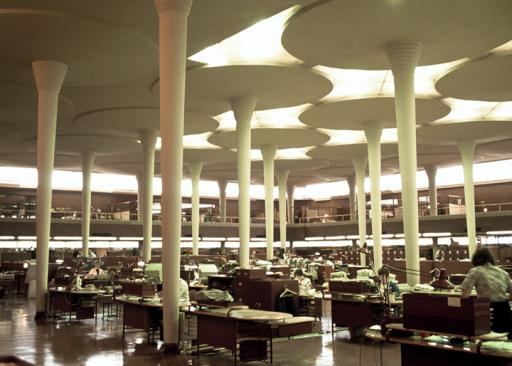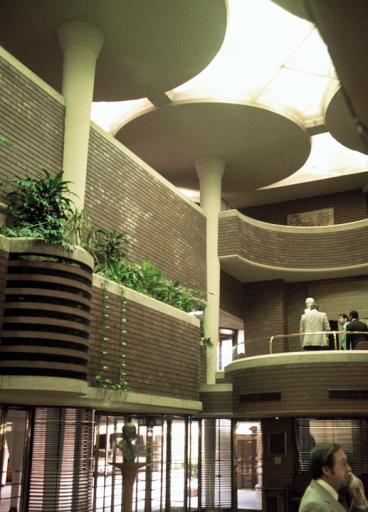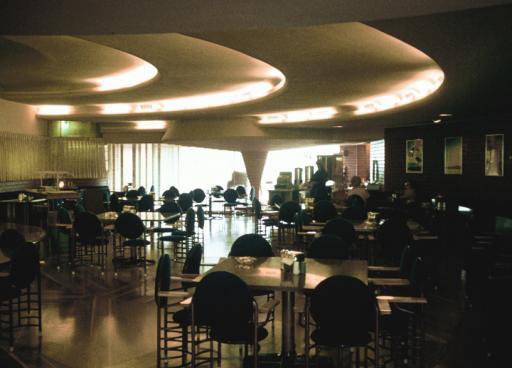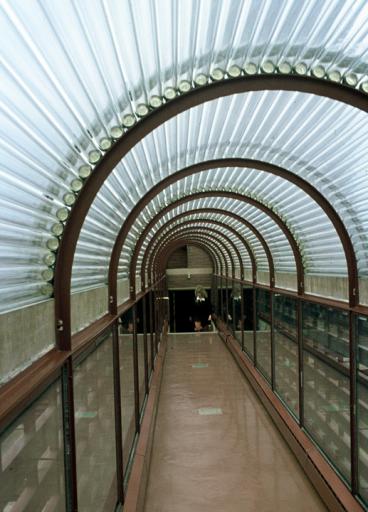Johnson Wax Building |
|||||||||||||||
|---|---|---|---|---|---|---|---|---|---|---|---|---|---|---|---|
| Primary Creator |
|
||||||||||||||
| Contributor(s) |
|
||||||||||||||
| Properties |
|
||||||||||||||
| Name of Work | Johnson Wax Building | ||||||||||||||
| Production Date | 1939 | ||||||||||||||
| Production Location |
|
||||||||||||||
| Current Location |
|
||||||||||||||
| Media Types | brick, glass tubes, reinforced concrete | ||||||||||||||
| General Notes | Known as the Office building and Research Tower for S.C. Johnson Wax & Son Co. The style is Modern, complex, geometric, integrated, romantic architecture, that is to say -- Organic architecture. Test. |
||||||||||||||
Description
A low slung brick structure consisting of brick bearing walls and tapered concrete columns that are "mushroom-like", in that they taper upward slightly and then fan out to an enormous capitals - the mushroom cap. These columns are used all throughout the structure especially in the great space of the building -- the main offices, which are formed from dozens of these slender columns that fan out at the top and create a "forest" of concrete columns. While the use of materials, especially the glass tubes for glazing throughout the building, is special (and had substantial practical problems), and is integral to the tour-de-force that this design represents in the history of architecture -- the central cause of this building's greatness is the space of the main administrative offices.
Theme
To Work should be a condition of grandeur and joy.<br>
Emotional Sum or Sense-of-life
Day to day life can be exalted and pleasurable.<br>
Context Information
Tags
Midwestern American architecture, organic architecture



